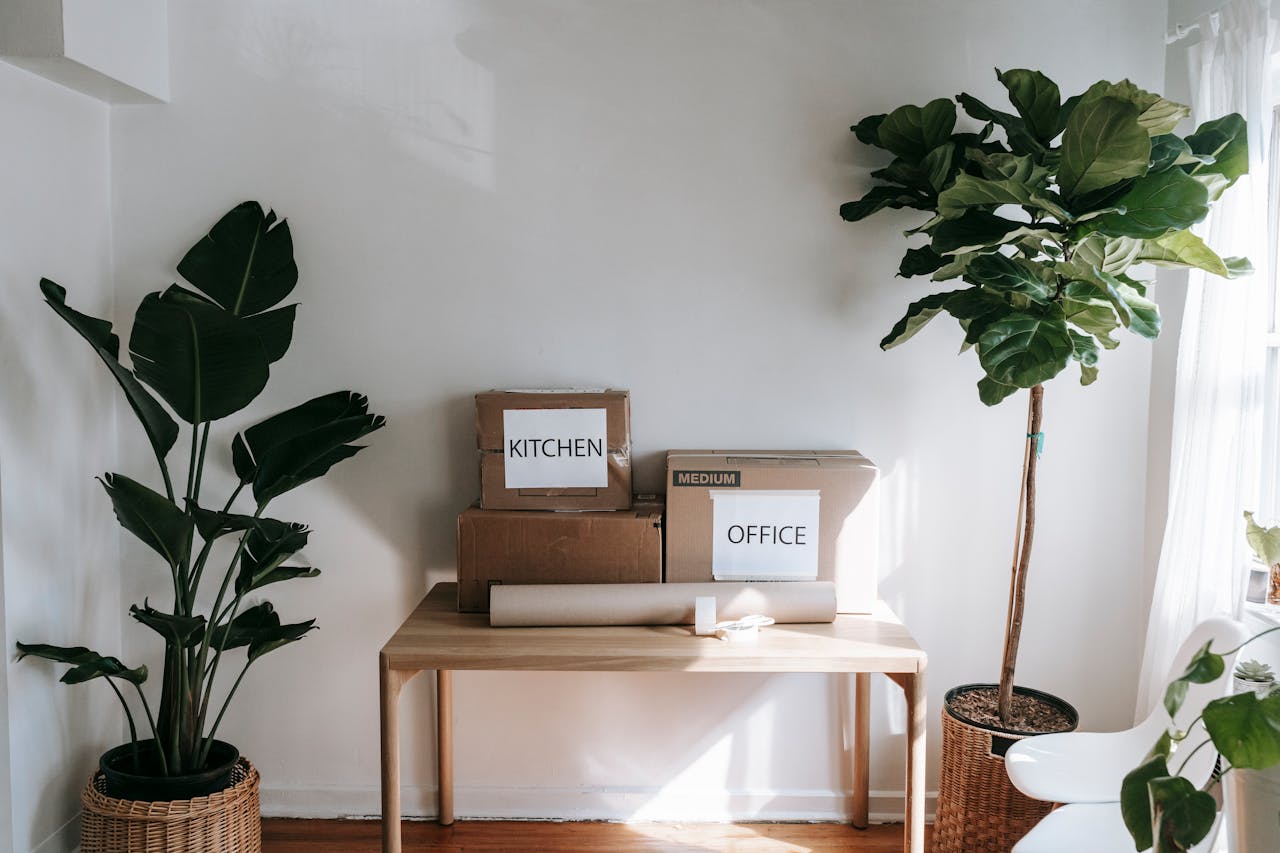

Moving is incredibly beneficial. It’s an opportunity to enjoy a new house and leave behind a lifestyle that may have been unfulfilling. Unfortunately, moving can also be complicated and may include unexpected delays that could that waste your time.
How can you save time and maximize the efficiency of your move?
The Biggest Secret: Planning Ahead
From reserving moving containers to collecting cardboard boxes, everything becomes easier and more manageable when you plan ahead. The more time you have to prepare for your move, the more tasks you’ll be able to complete ahead of time, the fewer mistakes you’ll make, and the less total time you’ll spend planning and managing your move. This also gives you plenty of wiggle room to verify details, double-check your work, and generally make sure you aren’t saddled with unexpected developments and interruptions.
Ideally, you’ll have several months to plan and execute your move. Unfortunately, this isn’t always possible. If you’re forced to move under hastier circumstances, or if your moving date is already coming up, start now and do what you can to recover any time you’ve lost.
In this guide, we’ll focus on the most important strategies for improving efficiency and saving time, assuming you have ample time to plan and carry out your move.
Months Before the Move
A few months before your moving date, you should focus on these strategies:
Make a schedule.
One of the first things you should do to avoid any time waste is make a schedule for your move. You can include all the items in this guide, as well as any other items you need to take care of before you ultimately depart. Depending on the nature and complexity of your move, you may want to schedule full days for individual tasks. You may also want to create a system that allows you to tackle work in smaller chunks. For example, you might spend 15 minutes a day decluttering and organizing your possessions a few months out from your move.
Give your home a thorough decluttering.
Decluttering your current house won’t just make your move easier – it will also help you feel less stressed for the duration of your stay. The ultimate goal is to get rid of anything you no longer want or need well before moving, especially those items that would otherwise waste your time on moving day. This will reduce the total number of possessions you need to pack and make organizing your possessions much clearer and easier, ultimately saving you hours of work and preventing more than a few headaches. Start with one room at a time and pay attention to any possessions you haven’t used or thought about in over a year. You can also safely get rid of anything you’re confident you no longer need. Consider selling, donating, or recycling these possessions rather than simply throwing them away.
Book important services.
Movers, moving container services, storage units, and other moving service providers book up surprisingly quickly. If you want to make sure you have access to these services, book these services as early as you can. Ideally, you’ll have a reservation date at least a month or two before you plan on moving. Also, do your research and make sure your service provider is a reliable one; unexpected absences, delays, or other hiccups on moving day can set you back many hours, or even days.
Develop a packing/labeling system (and start packing).
There are many philosophies on what makes the perfect packing system, but the most important thing is that you have some kind of system in place. You can start packing months in advance, as long as you start with items that you aren’t going to need in the foreseeable future (e.g., holiday decorations and long-term storage items). Part of your packing system should include a clear labeling system so you know exactly what is in each box.
Cultivate packing supplies.
It’s also a good idea to start collecting packing supplies months in advance, especially if you’re trying to collect those supplies on a budget. Consider visiting local stores to see if they have any free boxes you can pick up, and stock up on supplies like packing tape, permanent markers, and box cutters.
Weeks Before the Move
A month or so before your move, you can focus on these:
Assign responsibilities.
If you’re moving with a partner, kids, or roommates, start assigning responsibilities a few weeks before the move. You may be the head coordinator, but you shouldn’t have to do this by yourself. Make each person responsible for packing and labeling their own possessions, and consider delegating other tasks so you can spend your time tackling other jobs.
Finish packing and labeling.
You should have all but your most immediately necessary items packed and labeled a week before your move. If you can’t meet this high standard, that’s okay – just do the best you can.
Review terms and conditions of services you’re using.
Hopefully, you already have your services booked and your reservation dates in place, but this is a good chance to review any terms and conditions of the services you’re using. For example, are there any rules or restrictions for how you can pack your moving container? Are there certain items that your movers will not move? Do your boxes have to be labeled or packed in a certain way?
Make checklists and organize important documents.
Checklists, to-do lists, and service contracts are all important documents you should have at the ready, whether you print everything out and assemble the pages in a binder or simply organize your information online. Review all the information you have and maintain a notation system so you can look things up at a moment’s notice.
Pick up extra supplies if necessary.
This is also a good opportunity to pick up any extra supplies you may need. At this point, you should have the majority of the work done and you should have a clear idea of what’s necessary to finish it.
Prepare your destination.
If your new house is relatively close to you, and if the previous owners have already moved out, you can spend a few days before your move preparing your destination. Painting, reflooring, and deep cleaning are all much, much easier when a house is empty and would eliminate the time waste of doing those things after moving. Take advantage of this time if you can.
Finalize a floor plan.
After a final walkthrough of your new house, you can also finalize a floor plan. What will each room be used for? What types of possessions belong there? With this information, you’ll be able to more clearly label your boxes and save time getting those boxes to the proper places.
The Move Itself
At long last, moving day will arrive.
When it does:
Verify details with your service companies.
Even if you have total confidence in your service providers, it’s a good idea to call early and make sure everything’s going to happen on schedule. If there are any last-minute issues, you’ll have some extra time to take care of them.
Create a moving survival kit.
A moving day survival kit is a collection of important items and resources you may need throughout your move. Yours should include things like toiletries, cash, water and snacks, trash bags, and anything else that will keep you alive and healthy throughout the duration of the move.
Clear paths.
It’s a good idea to clear paths to make it easier for people to move boxes in and out of your house. If you’re hiring professional movers, this is especially important, as some moving companies require this. In addition to saving time and reducing stress, this will protect the integrity of your possessions and reduce the prevalence of injuries.
Organize your boxes.
Organize your boxes if you haven’t already done so. Your most important, daily used items should remain easily accessible and available at all times. Beyond that, boxes should be organized by their ultimate location in your destination.
Change your address.
It’s a good idea to change your address before you move. This way, you can minimize the chances of important mail (like bills) getting lost. It’s also a good opportunity to verify that utilities are turned on and available at your new home, even if you have a few weeks to transfer service.
After the Move
Once the move is complete, you’ll have the luxury of time to unpack, take care of responsibilities like transferring utilities, and finalize any service contracts you’ve utilized. There’s still a lot to do, but completing the move is a big accomplishment, so don’t hesitate to relax, take your time, enjoy your new space, and unpack at your leisure.
There’s no surefire strategy to move quickly or without stress. However, with the recommended preparation and organizational strategies in this guide, you should be able to eliminate most of the time waste associated with moving – and start enjoying your new house sooner.
Featured Image Credit: Photo by Blue Bird; Pexels; Thank you.











Deanna Ritchie
Editor-in-Chief at Calendar. Former Editor-in-Chief and writer at Startup Grind. Freelance editor at Entrepreneur.com. Deanna loves to help build startups, and guide them to discover the business value of their online content and social media marketing.